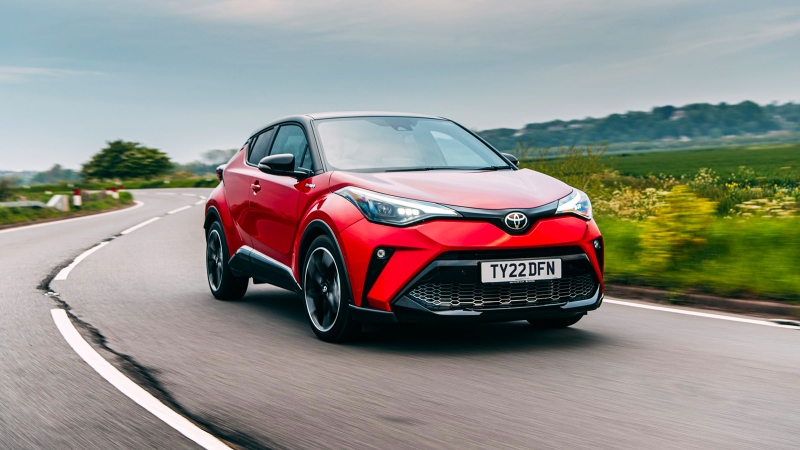
Toyota RAV4 engines, driving and performance
Gallery
How does the Toyota RAV4 drive?
As long as you're not expecting the RAV4 to entertain you behind the wheel, you'll find little to complain about its driving experience. The controls are accurate and responsive enough that it's easy to place the car on the road and cut through gaps in traffic, aided by the quick wits of its hybrid engine.
It doesn't relish being driven hard, however. Steer the car into a corner with any kind of speed and the car will heave over onto its outside wheels, leaving you inundated with complaints as your passengers get thrown about the cabin. That prominent body roll translates to a roly-poly sensation if you tackle any fast direction changes, too. Cars like the Ford Kuga or BMW X1 are generally more entertaining to drive.
Is the Toyota RAV4 comfortable?
Ride quality in the RAV4 is acceptable, but it could be better – trailing the likes of the Skoda Karoq and Peugeot 3008, which both take bumps with a little more grace.
Large impacts like potholes and speedbumps are both felt and heard in the cabin, but there's enough compliance that the harshness is mostly absorbed before hitting your seat. The large 19-inch alloys on our Dynamic-trimmed model also sent some constant patter from the road surface into the cabin – this effect should be less prominent on lower trims with smaller wheels.
Noise on the move in the RAV4 is a two-sided coin. At urban speeds, with the hybrid system taking on more of the driving, refinement is impressive. However, once the petrol engine is called into action, it makes a constant drone that swells to a raucous din under full acceleration. It's good, at least, that there's enough power on hand that you'll rarely need to stoke the engine that hard. Tyre roar and wind noise is also quite prominent at motorway speeds, so you might end up cranking the RAV4's stereo one notch higher than you might in rivals.
What’s the best Toyota RAV4 engine to get?
We've not tried the more powerful plug-in-hybrid version yet but we were generally very impressed by the RAV4's standard full-hybrid engine. Between the electric motor and the 2.5-litre petrol engine, you get 218hp – or 222hp in AWD models – so flooring the throttle will whisk the RAV4 up to motorway speeds without too much complaint.
What you will also be rewarded with, however, is a mighty racket from the engine as it spins up to near redline to deliver all its power. This does compromise refinement somewhat and discourages you from putting the pedal to the metal.
Embrace the RAV4's more sedate pace, however, and you'll find the hybrid engine makes this is a really easy car to drive every day. The instant response from the electric motor can always be felt at urban speeds, so just breathing on the throttle means you get a hearty swell of electric torque to carry the car forward. Driving like this also means you don't thrash the petrol engine as hard, improving the passenger experience.
Toyota RAV4 performance
The standard hybrid RAV4 will hit 62mph from rest in a respectable 8.4 seconds – or 8.1 if you choose the full hybrid with all-wheel drive. You'll only achieve that figure under full throttle, however, which isn't exactly the most exciting or rewarding experience in this petrol hybrid so, unsurprisingly, the RAV4 doesn't exactly make a great performance car.
Plug-in-hybrid RAV4s possess a much more significant 306hp, which cuts the 0-62mph sprint to just six seconds.















































